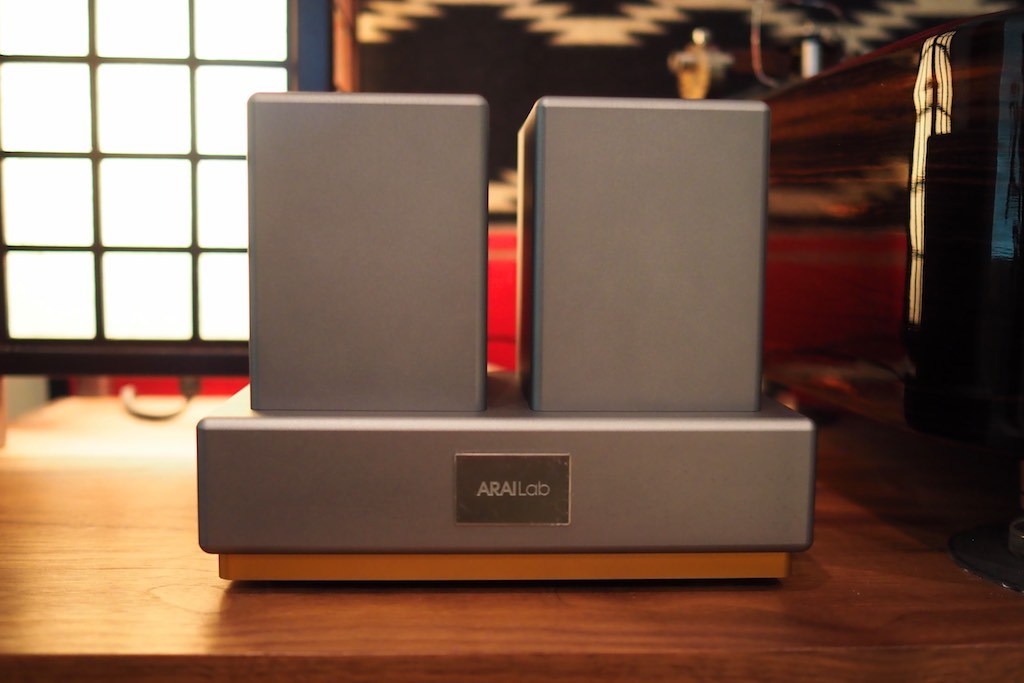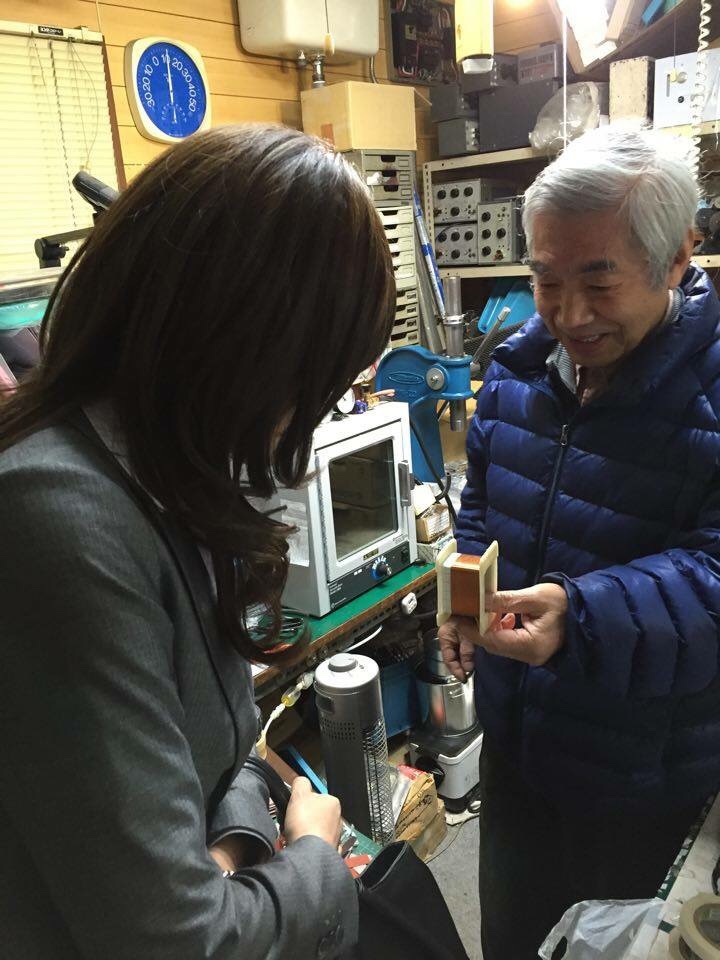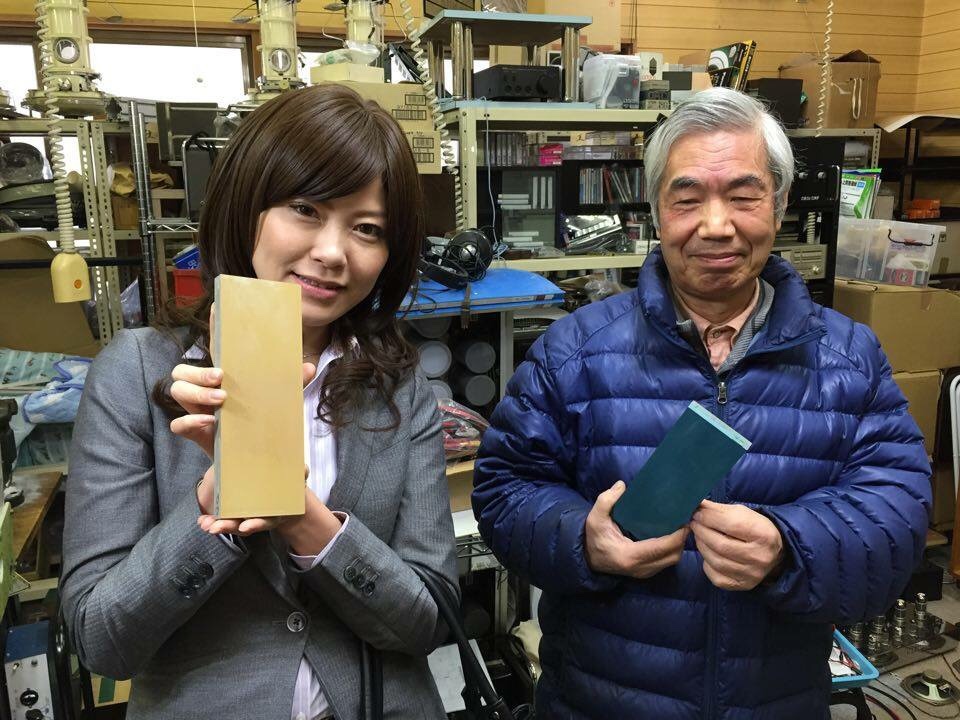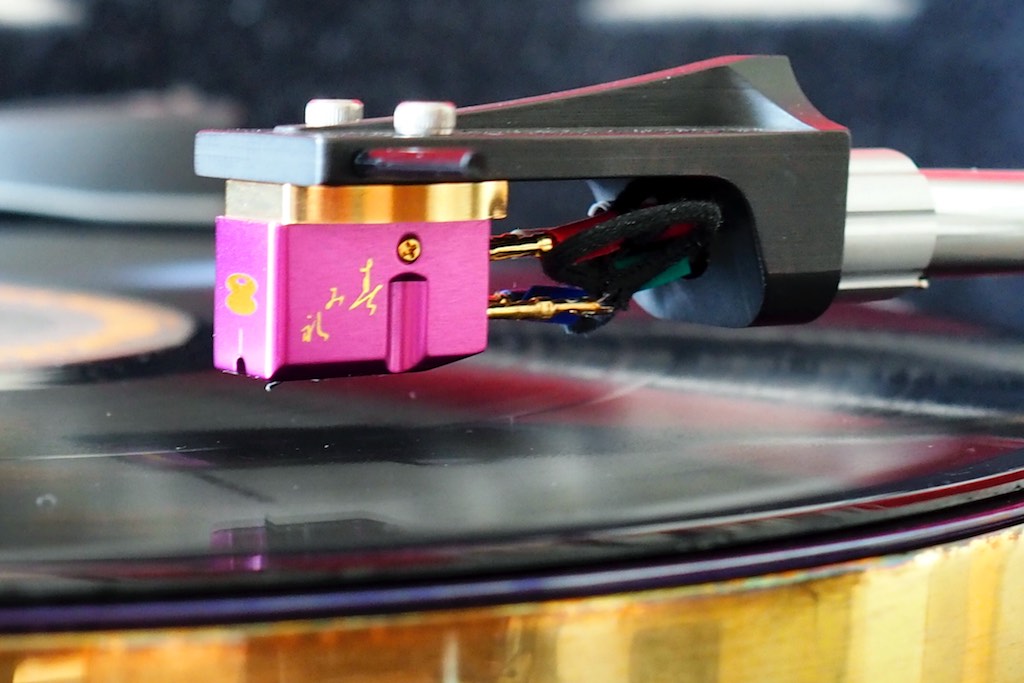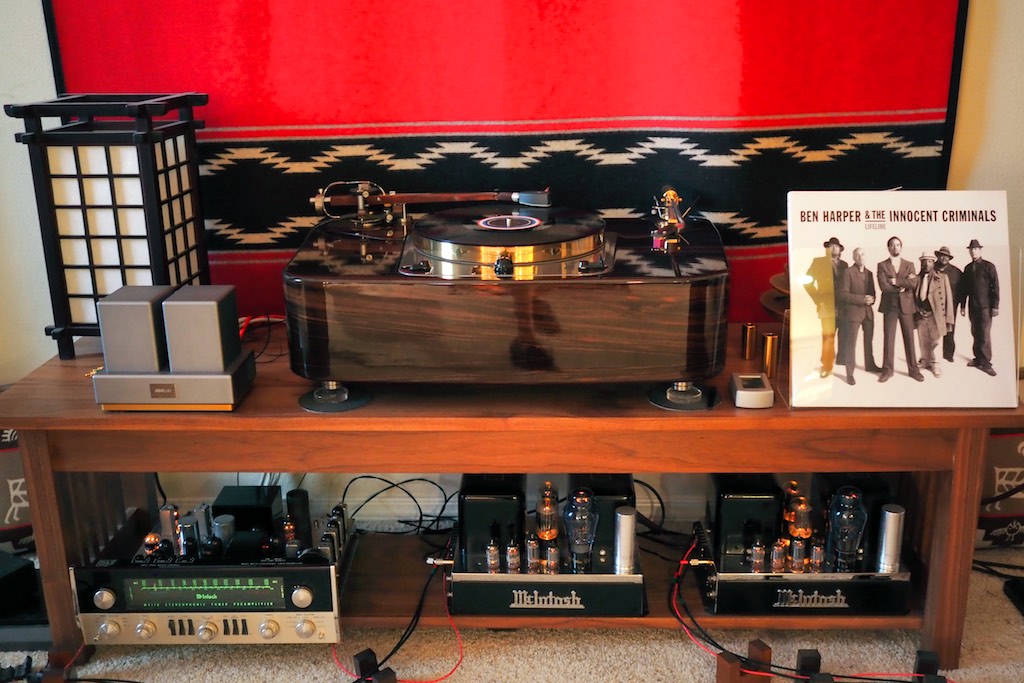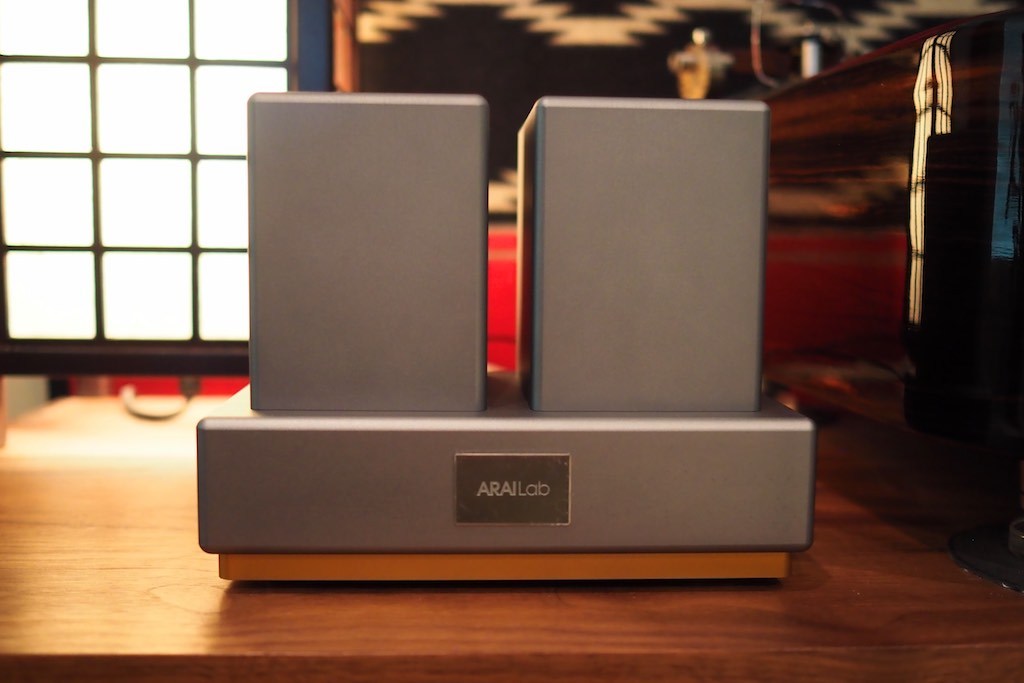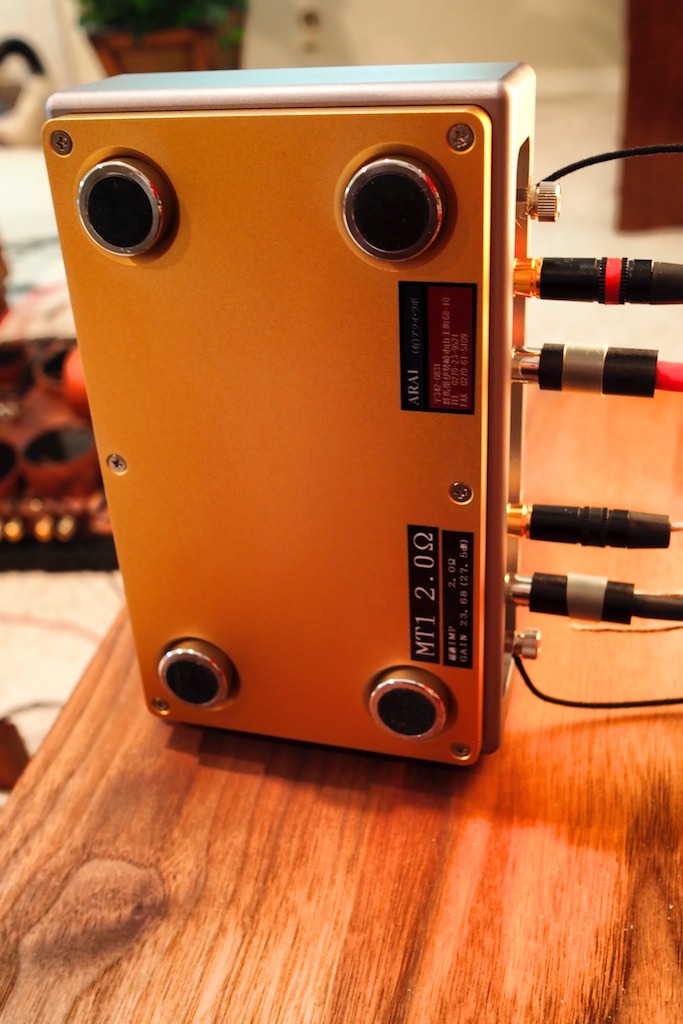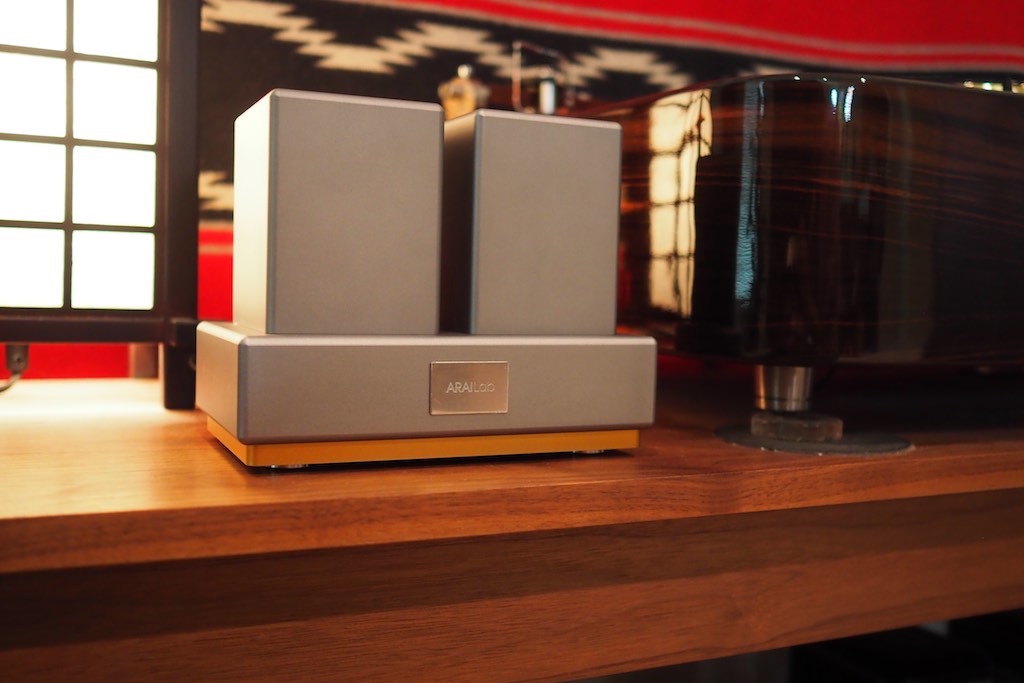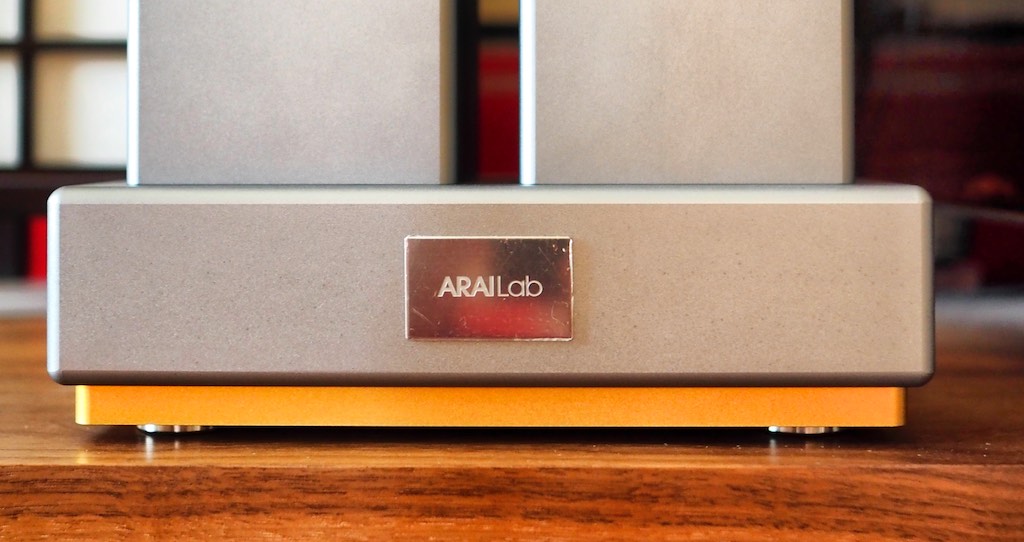I've been doing a lot of writing to get the review of the Arai Lab MT-1 SUT finished up for Positive Feedback, and I'm now done! Ta-da!
Here's a little sneak peek into the review before it is published at Positive Feedback in the coming week. Enjoy!
¸¸.•*¨*•♫♪ ¸¸.•*¨*•♫♪ ¸¸.•*¨*•♫♪
The Arai Lab MT-1 Step-Up Transformer for Moving Coil Phonograph Cartridges
By Jeff Day
One look at the Arai Lab MT-1 step-up transformer (SUT) and you’ll know in a moment that it is a very serious, ultra-quality, audio product.
The fit and finish are impressive and impeccable, yet what really stood out for me was the Arai MT-1’s considerable size and weight – it wasn’t that much smaller than one of my vintage McIntosh MC30 monaural power amplifiers!
The Arai Lab MT-1 is the creation of Mr. Toshio Arai (above) in Isesaki, Japan, who has been developing audio electronics and test equipment for Hitachi since the 1970s.
Arai-san opened Arai Lab so he could focus on the design of his personal audio interests, like the Arai Lab MT-1 step-up transformer that is the subject of this article, and the vacuum tube amplifiers that he currently has under development at his laboratory.
The Raison D'être Of Step-Up Transformers for Moving Coil Phonograph Cartridges
Before I go in-depth about the Arai Lab MT-1 step-up transformer (SUT), I thought it might be useful if I provided a short primer about why SUTs are used for moving coil (MC) phonograph cartridges in high-performance audio applications, and to explain how they work.
An MC phonograph cartridge is an electromechanical device whose stylus traces the record groove. As it does so its stylus/cantilever is moved by the tiny modulations of the record groove’s mechanically encoded waveform, which moves the tiny coils connected to the stylus/cantilever in the magnetic field of the cartridge’s internal magnets, producing an output signal in the fractional millivolt range that is an electrical analog of the mechanically encoded waveform of the record groove.
For a few MC phonograph cartridge output voltage examples, my Ortofon SPU Classic GM MkII has an output voltage of 0.2 millivolts (mV), my EMT TSD-15N has an output voltage of 0.21 mV, my Denon DL-103 has an output voltage of 0.25 mV, and the just reviewed (Issue 92) Murasakino Musique Analogue Sumile has an output voltage of 0.35 mV.
Using my beloved vintage McIntosh MX110Z tuner-preamplifier as the example (below left), the sensitivity of its phono inputs 1 & 2 is 3 mV at 47K Ohms.
Given the 0.2 mV to 0.35 mV range of output voltages from the aforementioned MC phono cartridges, they need to be amplified by approximately ten times to put their output into the sensitivity range of the phono inputs (3 mV), so that adequate “live-like” listening levels can be achieved.
Mr. Arai says that the “gold standard” way to increase an MC phono cartridge’s tiny output signal to a level that is appropriate to the input sensitivity of a preamplifier’s phono inputs is to use a SUT, and he tells me that he thinks that using a head-amplifier for an MC phono cartridge is not as good because it “… receives a signal by resistance which robs energy … and there is no energy loss through a SUT, and furthermore, the inductance effect of the coils improves the driving and braking force.”
Using the Sumile MC phonograph cartridge as an example, the 0.35 mV AC output voltage from the Sumile is connected to the input winding (or coil) of the SUT. The output winding of the SUT is connected to a load resistance, which in this case would be the 47K Ohm resistor of my MX110Z’s phono input.
The SUT’s input winding that the Sumile is connected to, and SUT’s output winding that is connected to the load at the MX110Z’s phono input, are insulated from each other and there is no electrical connection.
The magnetic field created by the Sumile’s AC current flow into the input winding generates a flux in the SUT’s core, where the output winding converts the flux back into current flow and produces a voltage at the 47K Ohm resistor in the MX110Z’s phono input.
In a SUT, the number of turns in the output winding is greater than the number of turns in the input winding, so the resulting voltage in the output winding will be greater or “stepped-up” compared to the voltage in the input winding.
The amount of amplification the SUT provides is dependent upon the impedance ratio between the input and output windings, which is determined by the number of wire turns in each winding.
To get that ten-fold amplification I want of the Sumile’s 0.35 mV output, the SUT’s output winding would have to have ten times the number of windings of the input winding, which would “step-up” the Sumile’s output to 3.5 mV, putting it into the right range for my MX110Z’s phono input sensitivity of 3.0 mV.
Voltage gain is not the only consideration when using a SUT, as the SUT’s impedance must also match the internal impedance of the MC phonograph cartridge you are matching it to or it can rather dramatically alter the high and low-frequency response of the cartridge, depending upon the direction of the mismatch.
For example, my Ortofon SPU Classic GM MkII has an output voltage of 0.2 mV and an internal impedance of 2 Ohms, my EMT TSD-15N has an output voltage of 0.21 mV and an internal impedance of 24 Ohms, my Denon DL-103 has an output voltage of 0.25 mV and an internal impedance of 40 Ohms, and the Murasakino Musique Analogue Sumile has an output voltage of 0.35 mV and an internal impedance 1.2 Ohms.
As you can see from my examples above, internal impedance varies significantly between the cartridges, ranging from the Sumile’s very low 1.2 Ohms to the Denon’s very high 40 Ohms.
To get the optimum performance from a particular MC phonograph cartridge, the SUT should have both the needed signal gain, as well as have the same impedance as the internal impedance of the cartridge.
For example, for my Denon DL-103 phono cartridge, I have a dedicated Auditorium 23 SUT designed to complement the Denon’s needs, and for my Ortofon SPU Classic GM MkII I have a bespoke Intact Audio SUT optimized for its needs.
The Arai Lab MT-1 Step-Up Transformer for Low-Output Moving Coil Phonograph Cartridges
Now let’s take an in-depth look at Arai-san’s Arai Lab MT-1 step-up transformer.
The Arai Lab MT-1 SUTs are bespoke items that are custom built with an impedance that is matched exactly to the internal impedance of the cartridge that the customer is ordering it for, so that the performance potential of a particular phono cartridge is maximized.
In the case of my review sample, this particular Arai Lab MT-1 was designed specifically for a cartridge with 2 Ohm impedance (see photo above), which happens to be the same value I need for my primary phono cartridge for stereo music listening, the Ortofon SPU Classic GM MkII, which has an internal impedance of 2 Ohms.
The quality of the input and output windings (also referred to as coils) used in step-up transformers are critical to their overall performance, with their quality described by the quality factor, Q, which is the ratio of a winding’s inductive reactance to its resistance at a particular frequency, and is essentially a measure of the windings efficiency in being able to transmit the signal without losses.
The larger the value of Q is, the more efficient the winding is at transmitting the signal. Arai Lab says that their MT-1 has an input winding Q that is more than 30 times higher, and an output winding Q that is more than 70 times higher, than the other most expensive audio step-up transformers available on the market today.
Arai-san has a proprietary technology and special method that allows him to wind a coil so accurately that it can achieve exactly an equal impedance for the cartridge it is being ordered for, so it can bring out 100% of the performance a given cartridge is capable of.
Arai-san’s windings are of such a high quality that his Arai Lab MT-1 SUT has a flat frequency response from 1.5 Hz to 140 kHz, whereas as other SUT’s start attenuating frequency response below 100 Hz and above 115 kHz, he says.
Arai Lab says the specific materials used in the construction of the Arai Lab MT-1 SUT contribute significantly to its performance.
The materials used in the construction of the MT-1’s chassis will be familiar to owners of Acoustic Revive products, and there is in fact a close collaboration between the two companies. It turns out that Arai-san and his laboratory, Arai Lab, are located in Isesaki-city, Gumma Prefecture, near Ken Ishiguro’s home and his audio business, Acoustic Revive, and as a result a close collaboration has developed between the two men.
Like the Acoustic Revive RPT-6 Absolute NCF Power Distributor that I reviewed in Issue 91, the chassis of the Arai Lab MT-1 is constructed from CNC machined A2017S Duralumin alloy.
The MT-1 SUT has four height-adjustable rhodium-plated machined brass footers attached to the bottom of the chassis, with the footers being fitted with a pad of high-tech vibration control material sourced from specialty company fo.Q. The fo.Q pad converts vibrational energy to electric energy, which is then converted to heat energy. The combination of Duralumin alloy chassis and the rhodium-plated machined brass footers fitted with fo.Q pads is considered by to Acoustic Revive and Arai Lab be the ultimate materials combination for chassis vibration control.
The core of the MT-1’s transformer is made from a “nanocrystalline Fe-based soft magnetic material with high saturation flux density” called “FINEMET” (a registered trademark of Hitachi Metals, Ltd.), and features “high saturation flux density”, “excellent temperature characteristics”, “high permeability”, “low core loss”, “high squareness”, and “low magnetstriction” that Hitachi says makes it superior to any other material for transformer cores. You can read more about FINEMET here.
Arai Lab says the FINEMET transformer cores of the MT-1 SUT are very large, and that the gap of the cut core is polished to a mirror finish.
The input winding of the MT-1 is made from oxygen free copper (OFC) wire, and the output winding is made from Furutech PC-TripleC wire made from a special forging process where micron level impurities are removed from the OFC. Furutech says that the PC-TripleC is designed specifically to be an audio conductor and can into very fine wire cable of transmitting even the most delicate audio signals.
The gauge of the output winding varies depending on the matching impedance desired. For example, the gauge used for a cartridge with 1-Ohm internal impedance is a very sizable wire, say 4 mm, so a very accurate winding is necessary to achieve high-performance from such a thick coil. Mr. Arai says that no other manufacturer can achieve such a super-accurate winding with thick coils like he can with his winding technology, and the result is that he can produce ultra-performance windings for even very low impedance cartridges like the Sumile.
Often transformer windings are potted as a way to damp hum and vibration in a transformer, but Mr. Arai says the technology used for his transformer windings is so accurate that his transformers do not generate hum and vibration problems, so he does not pot the transformers, and by doing so he actually preserves nuances in the signal that would be lost if the coils were potted.
The coils are screened from RFI/EMI induced noise by using “A perfect electromagnetic shield and an ideal earth connection.”
The 2.0 Ohm version of the Arai Lab MT-1 SUT that I have in for review is approximately 8 x 7.75 x 5 inches, and weighs approximately 15 pounds.
¸¸.•*¨*•♫♪ ¸¸.•*¨*•♫♪ ¸¸.•*¨*•♫♪
Ok, that's it for now.
I would like to thank Mr. Toshio Arai (Arai Lab) and Mr. Yoshi Hontani (The MuSon Project) for the opportunity to experience and write about the Arai Lab MT-1, it was a truly wonderful experience —thank you!
As always, thanks for stopping by, and may the tone be with you!




